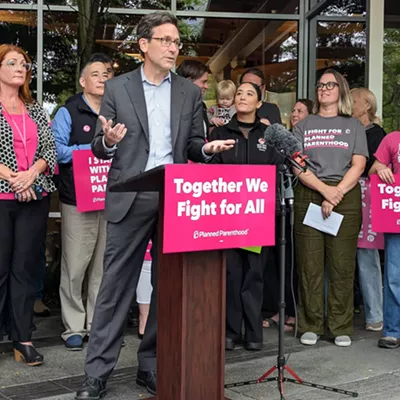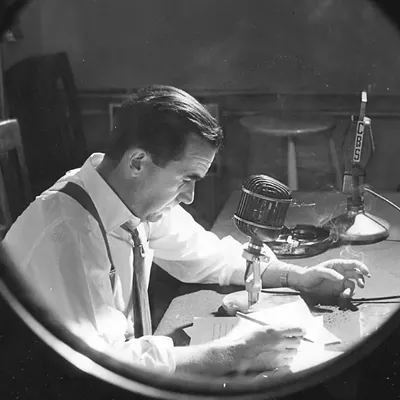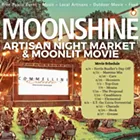It's easy to think that a north-south highway in Spokane is all about traffic counts and pavement. But it isn't. It's actually an impassioned
duel between competing visions. Under one vision -- spearheaded by the Washington Department of Transportation (DOT) -- the 10-mile highway is long overdue and represents smart urban planning. There's congestion now, and it's only going to worsen, says regional DOT Administrator Jerry Lenzi.
"By not planning for it now, you're going to have an excellent opportunity to recreate the sins of Seattle -- the second-most congested city in the continental United States," says Lenzi.
A small and scrappy group of citizen activists offers a competing vision: That the north-south highway (officially called the North Spokane Corridor, or NSC) is yesterday's engineering, based on yesterday's transportation needs. The highway, says Spokane resident Sharon Daggett, is a massive urban blight and a social injustice that ignores the need for a cultural shift toward more efficient mass transit.
Daggett is a sort of Paulina Revere against the NSC and an organizer of Citizens for Sensible Transportation Planning, a residents' group opposed to the NSC.
"Believe it, it will wreck the livability of this city," says Daggett. "We need to come to grips with our love of the automobile. If we don't, we will live in the middle of cloverleafs and highways."
The citizen's group is most upset that the highway plans call for a widening of Interstate 90 in the East Central neighborhood, between Perry and Fancher. Of the 388 houses and apartments that DOT says will eventually need to be bulldozed for the NSC, 374 of them will be in the East Central area for the I-90 widening, according to Lenzi. That means hundreds of people will have to find new homes.
DOT plans a series of on- and off-ramps plus extra traveling lanes where I-90 will someday connect to the northern portion of the NSC. The highway will look from above like a giant upside-down T, with the top of the T being I-90 and the leg of it the new highway. The NSC will connect I-90 with Highways 395 (to Colville) and 2 (to Newport).
Spokane, says Lenzi, is the only major city in Washington that lacks highways going both east-west and north-south.
The idea of a Spokane north-south highway is at least 56 years old and gets renewed thought from probably every motorist inching along Division during a Friday evening commute.
Eisenhower's 43,000-mile interstate system laid I-90 through the heart of Spokane. In the 1990s, state transportation officials began examining regional road projects, says Lenzi. One example of that was DOT's widening of Division in the '90s; another was a north-south highway.
DOT's argument for a north-south highway is simple: Congestion is only going to worsen. In the mid '90s, when DOT was studying and laying initial plans, motorists made about 240,000 vehicle-trips every day on Spokane's north-south arterials like Division and Monroe, says Lenzi. By the year 2000, that number had shot up to 305,000.
The federal government gave its approval to the NSC plans in 1997, and allotted, along with the state, a few dollars for the highway. Workers broke ground on the project last August. They're now digging 20,000 cubic yards of dirt on the first section, near Hawthorne Road in north Spokane, according to Lenzi.
Today's price tag for the entire project is an estimated $1.36 billion dollars, though state and federal legislators have only supplied $46 million, or one-thirtieth, says Lenzi of the total.
"We'll construct it as rapidly as we get funding," he says, adding, "If you were to give me all the money to build this corridor today, I could build it out in eight to 10 years."
Despite federal and state backing of the NSC, members of the citizens' group say they're waging a winnable struggle to shut down the north-south highway.
The more that people hear about the planned highway, activists with Citizens for Sensible Transportation Planning say, the more resistance heats up.
Says member John Covert, "We get that response from everybody: They're doing what? Where?"
Transportation officials originally thought the north-south highway would include a widened arterial street, perhaps Perry, up and over the South Hill.
Rallying against a South Hill piece is what coalesced the citizens' group, says organizer Daggett.
Daggett says she and other area neighbors realized the NSC would affect them -- negatively, they thought -- and their clamor shut down the South Hill expansion idea. (Lenzi says resident opposition was just one factor in discarding the idea.) That was the opening skirmish, says Daggett. "We're at war now.
"We are not fighting a North Spokane corridor," she continues, "We're fighting the expansion of I-90, because that is truly the heart of the city."
Neighbors are calling city and county planners, state representatives, even federal lawmakers. They have, they believe, a powerful message: Widening I-90 for the north-south highway will destroy dozens of historic homes, displace hundreds of people and erode the livability of Spokane.
Widening I-90 will displace perhaps 800 to 1,000 East Central residents, who the citizens' group says are mostly poor, often old and disproportionately from ethnic-minority backgrounds.
"They like to use the word 'displaced,' " says Covert. "It's bulldozed."
There will be plenty of warning, though, because the widening is years away -- how many, no one can say, given the lack of road funding, says DOT's Lenzi. DOT promises help for displaced residents to move, everything from moving vans to assistance finding mortgage or rent supports for new homes elsewhere. And, of course, DOT will reimburse owners of condemned properties. It is going to be bulldozing in slow motion. "We have to widen I-90, no question about it," says Lenzi.
Workers will more than double the size of the existing interstate, from 105 feet of road surface (not counting Second and Third avenues) to 475. Or, as opponents point out, the right-of-way width will be almost as wide as two football fields end-to-end.
Widening I-90 along the viaduct through downtown is not a part of this plan, as many activists fear, says Lenzi. But, he adds, DOT may consider what to do about the viaduct later.
As it flows north, NSC itself would be smaller, though not small. The highway would run eight lanes, then six and ultimately four near its connections with Highways 2 and 395, according to DOT documents.
The Spokane Regional Traffic Commission, which conducts long-range traffic planning for all agencies in Spokane County, projects that the northern end of NSC will see as many as 12,000 daily vehicle trips (both directions), and the southern end, 97,000. That's roughly the same number of cars that currently zip along the I-90 viaduct.
In one sense, the exact size of highway is unimportant: If you build a larger highway, it will encourage additional traffic and fill up, say the citizen activists, pointing to a Texas Transportation Institute study: cities that build major roads suffer congestion worse than those that don't.
"When you build excess lane capacity, it gets eaten up... and it isn't new traffic, it's people who are already there," says Covert.
Traffic is coming anyway, says Lenzi: "We're going to have increased trips, period."
Not preparing for it, contends Lenzi, is like what George Bush told Al Gore: "It's fuzzy math.
"I think transportation helps support our economy. Poor transportation doesn't... Our best lesson lies 290 miles to the west," he says.
The arguments against a north-south highway and its widening of Interstate 90 are many and varied -- the loss of historic homes, the social injustice of displacing a thousand poor people, loss of livability.
But then, so are the arguments for building the road: safety (fewer tractor-trailers plowing down Division), mobility (cutting the north-south commute time in half) and popularity (80 percent of residents support the NSC idea, according to a 1997 Robinson Research poll).
All of these are window dressing for the main point: Necessity. Public officials and DOT say economic needs and congestion drive the NSC. Citizens for Sensible Transportation Planning, though, suggest a new highway is unnecessary, were officials to focus on mass transit and a county beltway of improved suburban arterials.
The county is planning -- and already working on -- widening five existing roads along the perimeter of the Spokane metro area. But that beltway, say county and SRTC planners, is designed to complement, not replace the north-south highway, nor to handle its interstate truck traffic.
So one's necessity depends on one's point of view. For Lenzi and the DOT, the NSC isn't just smoothly flowing traffic, but progress and economic health. With some landscaping and noise-dampening walls, a large highway could even improve east Spokane's looks, says Lenzi.
"In my mind, it's an aesthetically pleasing and improved facility," he says, holding up artists' renderings of a park-like highway surrounded by greenery.
For Daggett and her fellow resident activists, though, the NSC is an engineer's fantasy, a blight of concrete and exhaust slicing through the city. Lenzi says the project will happen, unless Congress yanks funding altogether. Daggett asserts that the highway is not inevitable.
"You and I as regular people are going to have to get involved," she says. If not, "the pavers are standing ready at the door."














